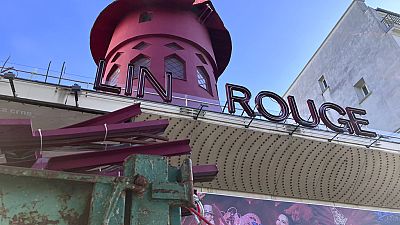We read more than ever before. But the way that we read may not necessarily mean we learn or know more.
We have the ability to read more than ever before — and it's easier to do so. You can scan the day's newspaper headlines waiting in line at the grocery store. You can pick from dozens of op-eds about the day's political drama. Your doctor running behind schedule means you can read some of the email newsletters in your inbox you haven't gotten around to.
But are you reading anything you'd actually bring up in a dinner party conversation?
Probably not, says David Mikics, the Moores Distinguished Professor in the English Department and Honors College at University of Houston and author of the book "Slow Reading in a Hurried Age".
A lot what we read tends to come from the internet via our cell phones or other electronic devices, which we read on the go or amidst doing several other things. And none of that necessarily encourages deep reading, Mikics says.
Our cell phones are designed to compete for our attention with dings, beeps and notifications, Mikics says. "And the internet, as we mostly use it now, is a kind of glorified fidget spinner."
The result is that we're doing a lot more skimming of headlines and quick type of reading, which leaves less and less time for that deeper, more thoughtful type of reading — meaning we're missing out, Mikics says. He compares it to watching a movie preview on your phone versus watching the film in its entirety in a movie theater. "Real reading is slow reading," he says — "being absorbed by what you read."
... the internet, as we mostly use it now, is a kind of glorified fidget spinner.
"Slowing reading" is the term Mikics uses in his book to describe deep, thoughtful reading. It's the kind of reading that allows you to know more about the world and encounter new things — and you actually learn something, he says.
Multi-tasking while reading is not so good for learning
They're really two different processes when it comes to what's going on in your brain, explains Jessica Church-Lang, PhD, a primary investigator in the Developmental Cognitive Neuroscience Lab at the University of Texas at Austin, where her research focuses on executive function and reading development in late childhood and adolescence. She's talking about deep reading versus skimming.
"Generally when you're paying more attention to something and more involved in something, more parts of your brain are engaged — memory networks, control and attention-related networks — and you're more directly paying attention to one thing," she says.
And that type of activity tends to mean you'll have a better chance of retaining that single thing you're engaged in.
The type of information that tends not to get retained later is that which you're exposed to when you're switching between tasks and easily distracted by what's going on around you for, adds Church-Lang, who is also Assistant Professor in the Department of Psychology within the Institute for Neuroscience at UTexas.
There's certainly a time and a place for both types of reading, Mikics adds. You don't need to read every phone number in the book to find the one you're looking for or every recipe online to find something to cook for dinner. Try skimming Jane Austen on the other hand, and good luck trying to have a meaningful conversation about it.
Gift Guide
Deep, slow reading takes patience, practice and intention
Key to reading something deeply so that it does stick is being conscious aboutnot just what you're reading, but also how you're reading it, both Mikics and Church-Lang agree. Here's what they suggest:
1. Make the conscious, intentional decision to read something deeply
The first step is setting the intention to devote your brainpower and attention to whatever you're reading (for whatever length of time you choose), Mikics says. You don't actually need a lot of time to read in an engaged way, but you do need to deliberately make the decision to do so, he says.
That means turn off your phone or put it away, tune out the other distractions, and just focus on your book or whatever you're reading.
2. Strategize
When will I read? Before bed? On your lunch break? On your commute? How much do I want to read — how many minutes or hours per day? "Pick a time you think you will actually read, and put it in your calendar," says Darius Foroux, founder of the productivity program Procrastinate Zero.
And only spend time reading books you actually want to read and are relevant to your life, he adds. Skim articles or book synopses or reviews ahead of time and decide what's worth investing your time into reading. "We have limited time," says Foroux, who also blogs about productivity, decision making, and habits. "A reading strategy helps."
3. Read with a purpose
Having a purpose for why you're reading something helps you think critically about it as you go, Church-Lang says. Write down (or at least think of in your head) questions about what you're reading beforehand, she suggests.
Reading aloud, highlighting, or underlining certain sentences or passages can help you check in on your own understanding of what you're reading and keep thinking critically, she adds.
4. Slow down
When you do commit to reading something — whether it be a newspaper article or a book — you're going to need to slow down and actually pay attention when you're reading it, Mikics says. Deep, thoughtful reading is going to take longer than skimming.
5. Re-read
Did a sentence or passage catch you off guard? Read it again. Think about it. Similarly when you finish a book or article, don't just toss it aside. Go back to a section that resonated with you or the very beginning and re-read it.
"Not only will it help you remember it, but it will help you remember what you liked in it and you'll see it a little bit differently," Mikics says. "It helps you ponder what is it that you read that you found truly interesting." (And that's what reading is really all about and why you do it — to remember thinks you find interesting, Mikics says.)
6. Think about the style
What makes this book or article different from others you have read? How would you characterize it? Style is the author displaying him- or herself to the reader, Mikics says. It's how you as the reader get to know the author, he says. "It's also a way of becoming more familiar with the book or text that you're reading."
7. Don't read it in a silo
When children learn to read, it's a very interactive process, Church-Lang says. "You ask what they think: What does this mean? What is this character thinking?"
The same process helps adults with reading, but we tend to do it less. She suggests joining a book club or discussion group. "It can really help you remember what you're reading and read more carefully if you know you're going to discuss it with someone and someone else is doing the same thing," Church-Lang says.
"Getting different perspectives on the same article can help your own understanding of it and make it stick because you've engaged with it at multiple levels," she says.
8. Practice
Deep reading is a craft, Mikics says. It takes practice.
You can try to optimize the perfect situation or environment that lets you focus on what you're reading, Church-Lang adds. "But ultimately practice is what makes it easiest to do."
MORE FROM BETTER
- How to improve your memory, according to neuroscience
- Why our sense of time speeds up as we age — and how to slow it down
- How to train your brain to accept change, according to neuroscience
Want more tips like these? NBC News BETTER is obsessed with finding easier, healthier and smarter ways to live. Sign up for our newsletter and follow us on Facebook, Twitterand Instagram.



